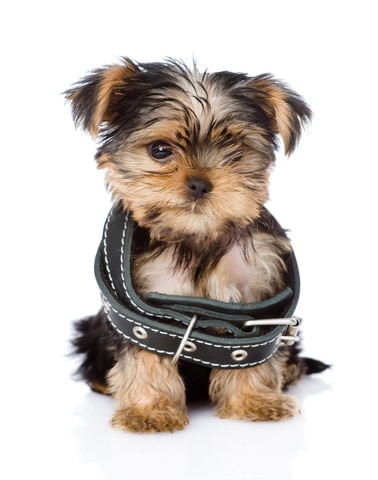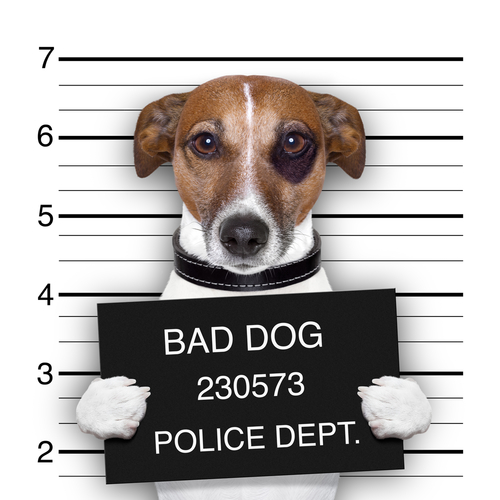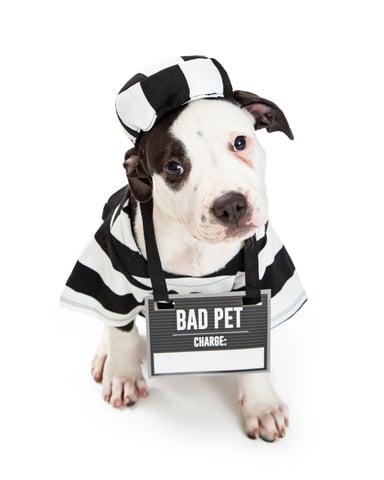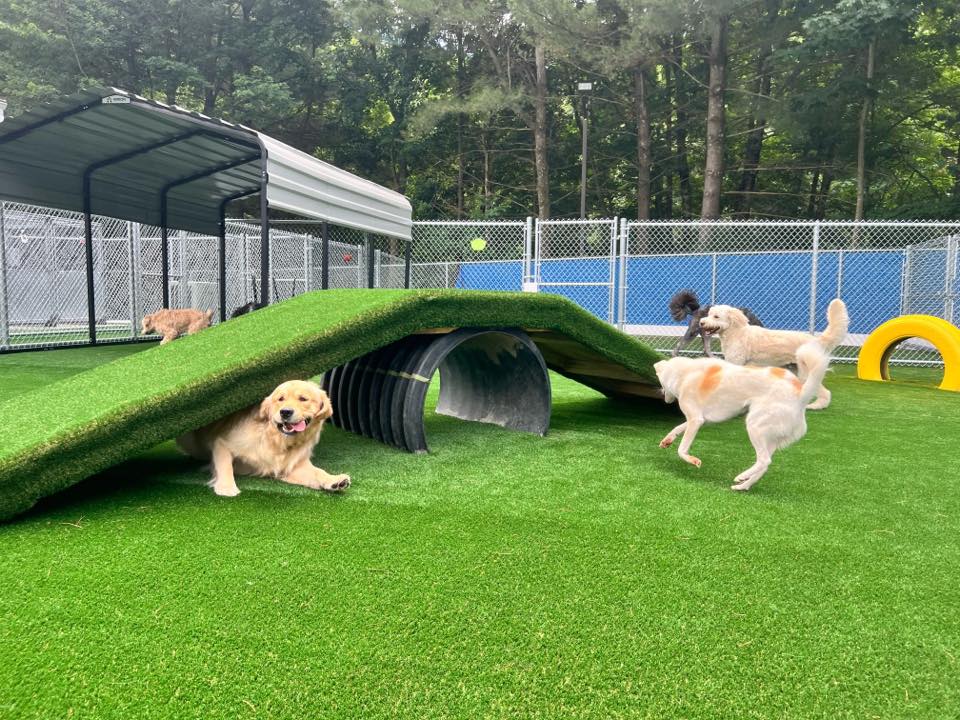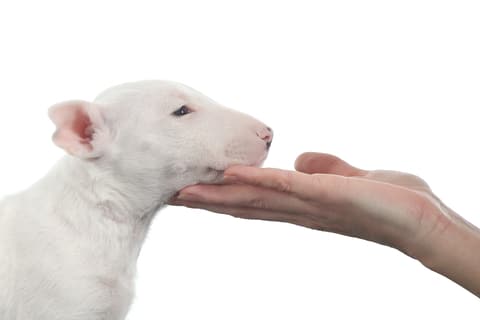Your Dog's Body Language and Subtle Signals.
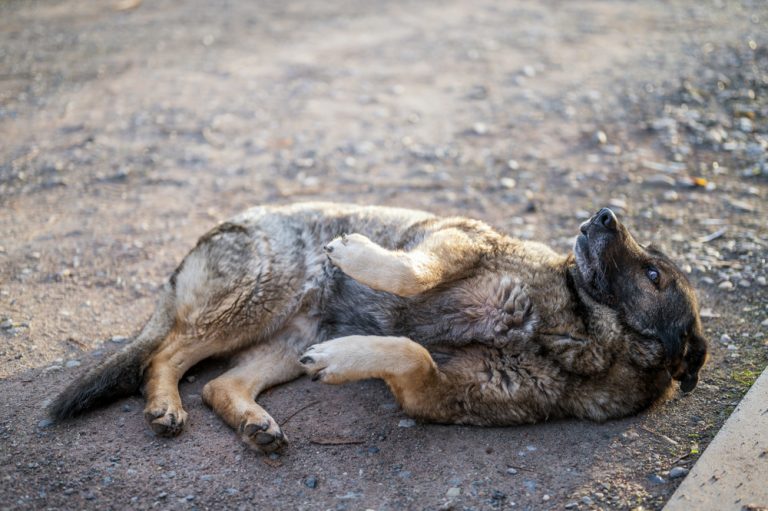
Life can be stressful—even for our dogs. Reducing stress is important to learning, and to life. Stress and anxiety interfere with learning and can lead to behavioral problems. When we recognize and respond to signs of stress in our dogs, they are more comfortable, better able to cope, and learn faster—for the best relationship imaginable.
Body Language Communication
Dogs communicate their feelings—and they don’t lie. Their communication can be subtle, but with practice, you can learn to interpret your dog’s messages. The following are what Norwegian dog trainer and author Turid Rugaas refers to as “calming signals.” They are the dog’s way of requesting respectful, polite, civil behavior. When you see any or several of these, your dog is saying one of two things: either he feels stressed, or he’s sensing stress (perhaps anger) maybe in you. These are the messages of calming signals:• “I’m feeling a bit anxious. Please, would you ease up and take the pressure off.”
- “I’m feeling anxious because of something that’s going on. Please help me.”
- “You’re feeling stressed. Perhaps you’ll feel better if I let you know I mean no threat.”
Dogs read body language, and many of the signals below can easily be seen between two dogs. Learn to recognize, respond to and even use them yourself, and you’ll help your dog (and your relationship) throughout your lives together. Study these signals, and when you see them, realize your responsibility to your dog.
Turning—eyes, head, body
The most commonly seen signal is turning—the entire body turning away, turning his head away, turning his eyes away, or even glancing away. All can be signs that your dog is feeling anxious or threatened. Likewise, if your dog perceives that you are angry or stressed, he may well offer the same signals in an attempt to calm you.
It’s easy for you to use this calming signal for your dog. If you perceive he’s stressed, try turning your head or side to your dog.
Licking—Lips, Nose, Other Parts, You
Have you ever taken your dog’s picture only to see his tongue over his nose? This is a common sign of stress because you’re pointing a strange box with a flashing light at him. Watch for your dog’s tongue to indicate a calming signal—everything from slight lip licking, all the way to actively licking at you.
Sniffing
When your dog puts her head down to sniff, she may be simply investigating, but what else might be going on? Perhaps your dog just saw something that concerns her. Look around and see. She may well be exploring, but it may be a calming signal. Consider your frame of mind, too. Is that part of it?
Slowing, Stopping, Freezing
This is an important source of misunderstanding. When your dog perceives stress in you, he’ll slow, or even stop. Think about this when you angrily call your dog and instead of responding quickly, he gets even slower. He’s saying, “Calm down, please.” Lighten up—he will, too. And if you perceive your dog is anxious, approach more slowly. It can help a lot.
Here’s a common situation. You call your dog and he doesn’t respond immediately. You call again, this time a bit louder and sharper, expressing mild annoyance. He may respond, but if he doesn’t, you call yet again—this time communicating exasperation. After all, he knows what “come” means, and you don’t like being ignored.
Responding to your tone of voice, your dog tries to diffuse your annoyance by curving, or approaching at an oblique angle. Since your image of a correct response is that he runs directly to you, his indirect approach makes you even angrier. Now you are steamed. You call again, now sounding downright angry.
Hearing your anger, your dog’s natural reaction is conflict avoidance: “I have to calm Mom/Dad down.” So in addition to the curving approach, he slows down to move unhurriedly. He shakes his coat. He stops to sniff the bushes. Then he urinates. Now furious, it takes all your self-control to keep from taking your anger out on him when he finally moseys up to you.
The paradox is that the angrier we get, the more the dog is compelled to diffuse our wrath with calming signals that serve only to make us even more furious. In this situation, everything we do and everything our dogs do are at loggerheads with each other.
The answer—Get the message the dog is sending. Recognize that our dogs are trying to get us to calm down. Rather than getting angry, take a few deep breaths, slow down, move more slowly, and perhaps even stop to sniff the roses.
Yawning
Dogs yawn when tired, but more often it’s a calming signal. Yawning is your dog’s way of communicating calming—often calming himself. You can calm your dog by yawning, too.
Lower Body, Lie Down, Roll over
Everything from lowering eyes, head, shoulders, entire body, lying down and rolling over are all calming signals communicating that your dog is anxious or is trying to reduce your anxiety. Rolling over is an extreme calming signal. If your dog rolls over in a calming signal (not just for a belly rub), consider how much stress he’s feeling.
Anxiety Urination
Commonly called “submissive” urination, this is a sign of anxiety. Don’t get mad. Either ignore it, or better still, try sending a calming signal instead.
Escalating anxiety: The Stairs – Like Stoplights: Green/yellow/red
As the level of stress your dog is feeling increases, so do the signals that request your help in removing the stressful factor(s). Whether it’s a bothersome puppy or child, a chaotic environment, a training session that’s gone on too long, or countless other things, a dog sends signals requesting help out of a stressful situation.
A dog’s signals start at the bottom of the staircase—on the green steps. Subtle signals gradually get stronger as stress increases. If the situation doesn’t change, the dog’s stress, and his signals climb upward. Of course we don’t like it when our dogs growl, but it is important to understand that growing is communication. The dog is saying, “This situation is not good for me.” Our responsibility is to help our dogs, not punish them for communicating. In other words, never punish Calming Signals. Respect them and help your dog.
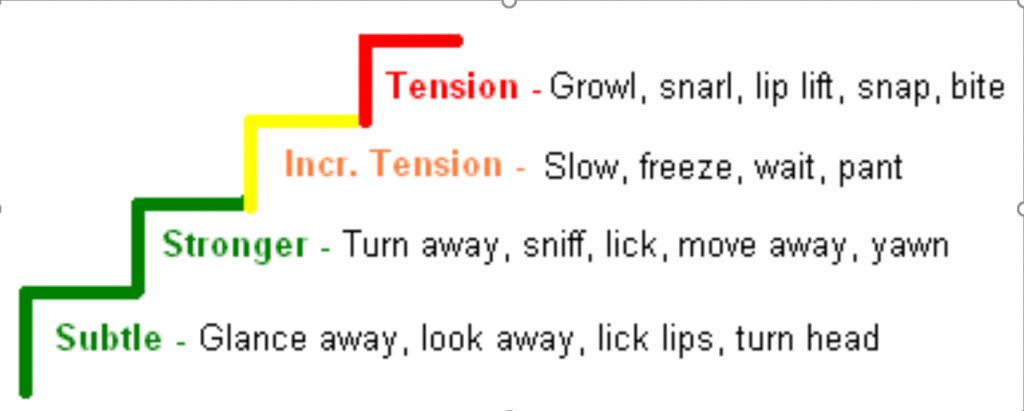
Otherwise over time, if a dog’s signals are repeated ignored, he may simply stop giving them. This is when a dog jumps directly to the red stairs–reacting seemingly “without warning,” With time and patience, dogs can re-learn to give signals. Better–far better!–is to watch for the early ones, and show appreciation for how your dog is feeling (and communicating) by removing either the offending stress producer, or removing your dog from the situation.
The Bottom Line
Pay attention to your dog’s signals. The more you do, the better your dog and your relationship will be.

